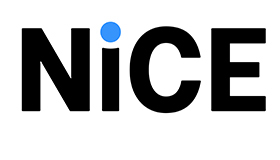Andrea Matsuda at NICE looks at the sound of a quiet quitter.
Business leaders had just learned to cope with the Great Resignation when another negative workforce phenomenon began to affect their operations: quiet quitting.
Rather than quitting outright (aka loud quitting), the quiet quitter avoids putting any extra effort into their job beyond required tasks. In some extreme cases, they ignore their role in its entirety.
Physically, the employee is present, but they’ve checked out mentally. Many quiet quitters fit Gallup’s definition of being “not engaged” at work—in other words, people who do the minimum required and are psychologically detached from their job. This describes half of the U.S. workforce, according to Gallup.
While the act of quiet quitting has been around for years—between 13% and 20% of Americans have reported being actively disengaged at work since Gallup started conducting employee engagement surveys in 2000—the term itself is a new one brought about by the increase in remote and hybrid work due to the COVID-19 pandemic.
This trend is especially concerning for the contact centre, where labor costs account for the majority of contact centre costs (around 70%, according to ICMI) and employees play a determining role in the quality of the customer service delivered.
An increasing number of forward-thinking organizations are leveraging workforce management solutions to understand and combat the quiet quitting phenomenon.
A WFM’s Intraday Manager allows managers and supervisors to stay abreast of how their employees are performing day in and day out. In the fluid contact centre environment, managers need to be able to anticipate fluctuations that range from customer behavior to agent behaviors.
CXone WFM’s Intraday Manager gives managers and supervisors visibility into the intraday metrics of their call centre agents, enabling them to make informed decisions and quickly pivot as needed.
The WFM’s Intraday Manager empowers managers to combat quiet quitting with powerful tools that include:
An Intraday Grid
An intraday grid that displays the forecasted and actual metric results for selected skills for the current day.
This allows managers to understand where they might be understaffed or overstaffed, where they might be able to take advantage of setting up some time for training or coaching, and where they might need to cancel scheduled trainings and offer additional overtime.
The intraday grid updates every 15 minutes, ensuring that managers have up-to-day insight into what agents are doing.
An Adherence Indicator
An adherence indicator, in the form of a red headphone icon, that is shown in the out-of-adherence column of CXone WFM if the expected activity state is open.
If an agent is scheduled to take calls but is not doing so, managers can pinpoint the exact timeframe the agent has been out of adherence and check in with that employee to find out what’s going on—in effect, amplifying the sound of a quiet quitter so they can take action.
Visibility Into Accumulated Time Out of Adherence
Quiet quitting is often caused by a disconnect between the agent and their manager. Since the pandemic, younger workers in particular report significant declines in feeling cared about and having opportunities to develop, primarily from their manager, and managers are key to creating a culture where employees are engaged and feel their career development is encouraged, research has found.
By enabling managers to see how much out-of-adherence time agents have accumulated on a specific day, they can identify employees who seem to be disengaged and schedule training and coaching time.
Managers can also easily track the cause of misalignment between the agent’s schedule and actual activity, for further insight into agent engagement.
Optimization of Lunches and Breaks
Managers often fail to optimize these activities because it’s typically a time-consuming manual process. CXone WFM’s Intraday Manager removes the hassle through automation—managers simply need to approve a daily proposal for an optimized schedule.
The Ability to Reforecast as Needed
Managers can manually trigger reforecasting operations at any time during the day, recalculating the forecast values based on the day’s trend.
The WFM’s Intraday Manager helps you ensure that you are always ready to pivot, whether you have quiet or loud quitters.
This blog post has been re-published by kind permission of NiCE-ltd – View the Original Article
For more information about NiCE-ltd - visit the NiCE-ltd Website
Call Centre Helper is not responsible for the content of these guest blog posts. The opinions expressed in this article are those of the author, and do not necessarily reflect those of Call Centre Helper.
Author: NiCE-ltd
Published On: 10th Jul 2023 - Last modified: 6th Sep 2024
Read more about - Guest Blogs, Andrea Matsuda, NiCE, NiCE CXone






 NiCE (NASDAQ: NICE) is transforming the world with AI that puts people first. Our purpose-built AI-powered platforms automate engagements into proactive, safe, intelligent actions, empowering individuals and organizations to innovate and act, from interaction to resolution. Trusted by organizations throughout 150+ countries worldwide, NiCE’s platforms are widely adopted across industries connecting people, systems, and workflows to work smarter at scale, elevating performance across the organization, delivering proven measurable outcomes.
NiCE (NASDAQ: NICE) is transforming the world with AI that puts people first. Our purpose-built AI-powered platforms automate engagements into proactive, safe, intelligent actions, empowering individuals and organizations to innovate and act, from interaction to resolution. Trusted by organizations throughout 150+ countries worldwide, NiCE’s platforms are widely adopted across industries connecting people, systems, and workflows to work smarter at scale, elevating performance across the organization, delivering proven measurable outcomes. 






























